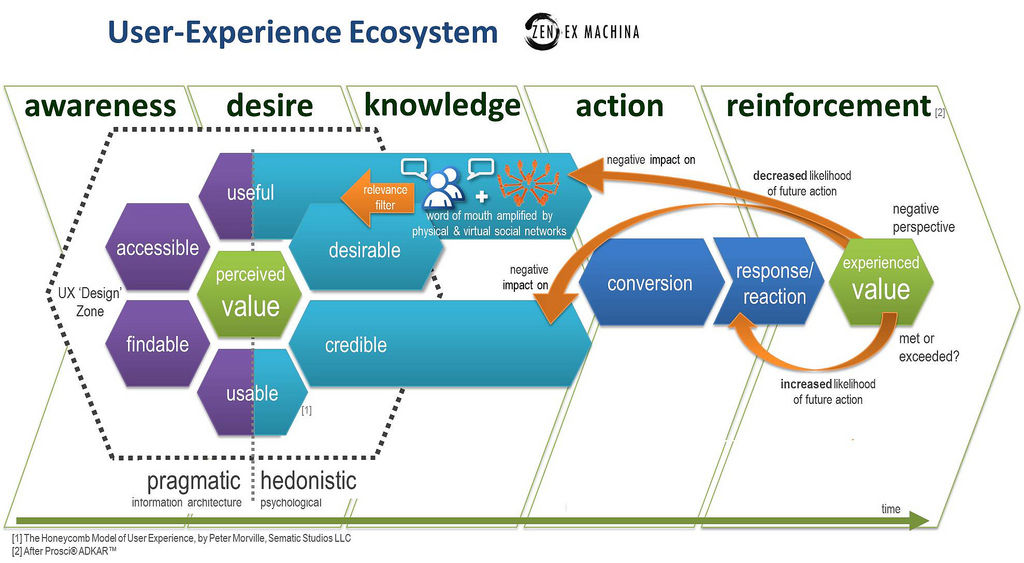UX Ecosystems
The term ecosystem may have its origins in biology and the rich and complex interaction between animals, plants, natural resources and the environment, but this concept that nothing exists in isolation and free from the effects of context is a powerful for user experience designers. The implications of the user's environment and all other things within it, is nothing new, but the nature of the products that now feature so heavily in of our lives and how they accommodate and work with one another, is of increasing importance.
Dave Jones (2012), in Design for a Thriving UX Ecosystem, defines a UX ecosystem as, "...a set of interdependent relationships between components within an information environment".

Author/Copyright holder: Matthew Hodgson. Copyright terms and licence: CC BY-NC 2.0
The components outlined by Dave Jones include the people, their goals and practices, the digital and alnalog technologies that are used by these people to connect and share information, and the information that is shared.
No Man (UX) is an Island
When we are using any product or service it is usually in amongst a number of others. We rarely have one website open, we frequently have more than one device on the go at a time, and much of our lives are spent in the company of other people, whether we are interacting directly with them or not. The complex network of relationship between man and things, embedded within their context, is the cornerstone of most if not all user experiences. When products fail to nestle neatly into our lives and allow or even enhance relations between people, the user experience is typically poor.
As a not-so-subtle example, consider a laptop that has a loud beep to notify the user every five minutes of use if they are running the laptop from the battery and not the mains supply. If the user is outside or with other people, which is more likely if they are using battery life, then this feature may be embarrassing and potentially annoying for everyone else. Imagine a website that automatically sets the tab size five times larger than all other tabs; for the website owner(s) this might have the benefit of preventing the user from seeing other websites competing for their attention, but in terms of user experience it disrupts the natural flow from tab-to-tab.
The acquisition of information and the process of sharing information should be as smooth as possible. Products that disrupt this flow interrupt individual users and their relationships between one another are affected as a direct result. It is important to make decisions according to their impact on the user experience specific to that product, but a more global view of user experience is also required to ensure that the product fulfils a positive role within the bigger picture or the UX ecosystem.
In Summary
Designers may need to look at the finer details, but ignoring the bigger picture is often more important. Few products are used in isolation and free from the effects of the user's environment or context. Ignoring how a product slots into the user's life, with all of the other devices, tools, websites, products, and other elements competing for their time and attention, can impact on user experience. Designers must think in terms of UX ecosystems, or how comfortably their product sits into the 'world' in which the user is operating.
Header Image: Author/Copyright holder: Matthew Hodgson. Copyright terms and licence: CC BY-NC 2.0











